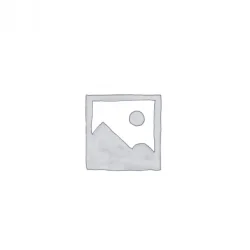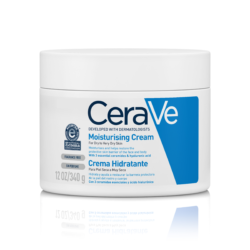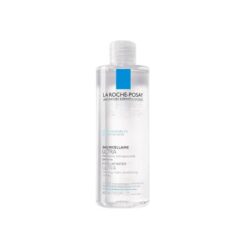A natural SPF 15 cream still provides very good sun protection whilst not requiring as much clear Zinc and other ingredients as with higher SPF formulas so it feels lighter on the skin. This formula provides long lasting protection without using UV Filters or penetration enhancers, and it won’t leave you looking white as a ghost after application. This is personally what we prefer to use at home. SPF 15 will provide protection for 4 hours for someone who would normally burn in 15 minutes, and doesn’t break down on the skin, diminishing protection levels.
We also made this delicious moisturiser full of natural oils that are high in the types of fatty acids that healthy skin needs. These help to hydrate, moisturise and pamper dry skin. This cream is for absolutely everyone, including babies, and those with sensitive skin so rub it on whenever and wherever your skin could use a little love and protection from the sun.
Products that contain Zinc can be a little harder to apply that thinner formulas that don’t contain Zinc, or those spray ones that seem convenient but it’s hard to tell if your skin is covered. We recommend rubbing our Zinc-based products in with a quick smear, and then allow it to sit on the skin for 30 seconds or so to warm up to body temperature, and then rub in clear. A little extra effort for a lot of extra benefit. Avoid contact with eyes; wear cool sunnies instead.
INGREDIENTS
Aqua (H₂0’s Fancy Name), Zinc Oxide, Squalane (Olive), Coco-Caprylate (Coconut Based Conditioner), Simmondsia Chinensis (Jojoba) Seed Oil, Aloe Barbadensis Leaf Juice (Aloe Vera), Cetearyl Alcohol (Plant Based Emulsifier), Glyceryl Isostearate (Emollient), Tocopherol (Natural Vitamin E), Cetearyl Glucoside (Plant-Based Emulsifier), Polyhydroxystearic Acid (Emulsifier), Rubus Idaeus (Raspberry) Seed Oil, Piroctone Olamine (Olamine Salt), Cyamopsis tetragonoloba Gum (Guar Gum), Allantoin, P-Anisic Acid (Anise Derived Preservative), Glyceryl Stearate (and) Ceteareth-20 (and) Ceteareth-12 (and) Cetearyl Alcohol (and) Cetyl Palmitate, Potassium Sorbate (Natural Preservative), Hyaluronic Acid (Retains Moisture), Humulus Lupulus (Hops) Extract.
We choose to avoid repeated exposure to ingredients like Parabens, Phenoxyethanol and penetration enhancers. And many more we don’t have room to list here.
We show all the ingredients on our website, not just the pretty ones. That way you can see why we chose them and get in touch if you have any more questions.
Please be aware that ingredients may vary from time to time. Please refer to the ingredient list on the product packaging for the most up-to-date and relevant list of ingredients.
FAQS
How does SPF rating work?
A higher SPF rating requires a lot more sunscreen chemicals for diminishing returns. SPF 15 blocks 94% of UV radiation while SPF 30 blocks 97%, a 3% difference but a lot more ingredients that make higher SPF products feel thicker on the skin. SPF 15 will provide protection for 4 hours for someone who would normally burn in 15 minutes. SPF 30 provides protection for 8 hours of sun. The amount of protection, in reality, depends upon both the SPF rating and the thickness or amount which is applied.
(The other way to look at this is that SPF 15 allows 6% of UV through, while SPF 30 allows 3%, so a reduction of 50%. It depends on how you do the math.)
How does sun protection work?
There are two main types of sunscreens. Firstly, natural sunscreens that use Zinc Oxide or Titanium Dioxide as a physical barrier that reflect UVA and UVB away. The second type is “UV Filters” that absorb high energy UV radiation and emit low energy radiation. These are always synthetic, which is why we choose to use Zinc Oxide to provide natural sun protection.
Isn’t Zinc normally white?
Yes, Zinc Oxide would normally be white on the skin. We use a special type of Zinc Oxide that is made here in Australia that is dispersed within Jojoba Oil which helps make it clear and non-greasy.
What are UV filters?
These are various chemicals that absorb high energy UV radiation and re-emit it as low radiation. These are always synthetic, which is why we choose to use Zinc Oxide to provide natural sun protection.
Should I wear sunscreen every day?
This is a very personal choice and depends on a lot of things such as how much time you’ll be spending outdoors in direct sunlight as well as your skin tone and tolerance of the sun. Personally, we use sunscreen when we know we are going to be spending a lot of time outside, but on other days when we are just going into the office, we prefer to use one of our other non-SPF moisturisers, and we have a few. Bear in mind that up to 2/3 of Australians are Vitamin D deficient. Only around 15 minutes of sunshine is required 2-3 times a week for the average person to obtain correct amounts of Vitamin D.
Where can I find out more about sunscreen?
Sunscreens with SPF ratings over 15 are considered “therapeutic products” and so their safety or efficacy cannot be questioned. The way to get information is to spend 15 minutes doing your own research online to help choose the right sunscreen for you. Wikipedia, although not always accurate, has a very good page on sunscreen and well worth getting the facts. Try and read at least from half way down the page if you can.
What ingredients do you avoid when making a moisturiser?
There’s lots of things you won’t find in this cream (or any of our other products) because they were all formulated for family members and close friends. This includes Paraffin and Mineral Oil which derive from petroleum, but are commonly found in commercial moisturisers like Sorbolene. We don’t think putting the stuff that goes into our cars on our skin is the healthiest thing we can do.
We also don’t use any synthetic preservatives such as Parabens and Phenoxyethanol, although they’re pretty common too, including with a few brands that claim to be natural (you know who you are!). We avoid a lot of other things too, way too many to list here. We also don’t use any useless, trendy ingredients like stem cells from Swiss apples or super power jellyfish DNA, just natural, effective ingredients for healthy skin.
Is this a face cream or a body cream?
We like to keep things simple even if marketing can sometimes tell us otherwise and get us to believe we need a different cream for every part of the body. This cream is made for your skin so rub it on whenever you like on your face and body, and hands and feet too, we don’t discriminate.
Do your sunscreen products contain nano particles?
Our sunscreens do contain nano-particles. Any clear Zinc on the market is now classed as ‘nano-particles’ BUT of different sizes. These have previously had a bad rap, however, the description of a nano-particle has since changed so they will not cause any harm. We use a standard Zinc Oxide with a median particle size of approximately .31 microns (this is 310 nanometres), with all particles between 0.25 microns and 0.35 microns. As a result, Zinc Oxide is nearly invisible when applied to the skin yet still offers both broad-spectrum UVA and UVB protection. This means none is absorbed into the bloodstream.
Is your Cover Up Buttercup water-resistant?
This formula is not water-resistant so make sure to reapply immediately after activity and swimming. Pair up with our SPF 15 Lip Balm to ensure you are fully covered and protected.
Are your products reef-friendly?
Absolutely! Our SPF products are proudly reef-friendly as we don’t use any of the synthetic ingredients that are known to damage and harm coral reefs.
What is the percentage of Zinc Oxide in your sunscreens?
Our SPF 40 products contains 24.96% Zinc, and our SPF 15 products contains 19% Zinc.
What is the youngest age sunscreen can be applied to?
All of our sunscreen products are suitable for all ages, including children and newborns.
How often do I need to re-apply sunscreen products?
Believe it or not, but the answer is NEVER! As long as our sunscreen is on the skin it will continue to reflect the UVA and UVB rays constantly, without breaking down or wearing out. You will only need to re-apply our sunscreen if it is physically rubbed off. Other commercial and chemical sunscreens need to be reapplied because the UV rays actually wear out the chemicals over time and the sunscreen will stop working within a couple of hours.










Reviews
There are no reviews yet.